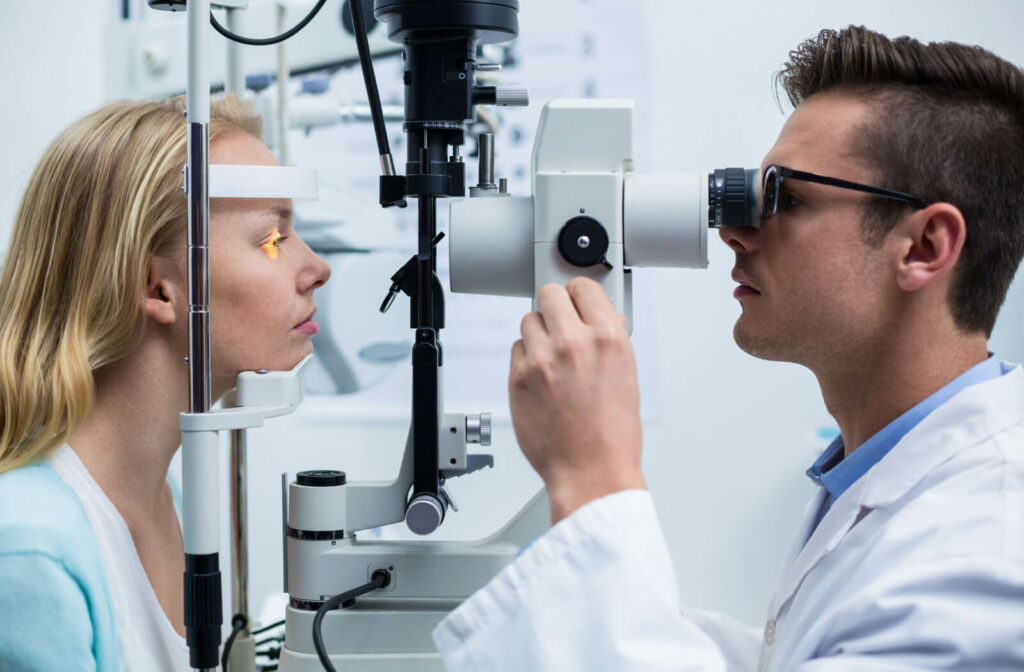If your optometrist notices a problem during your eye exam, they may recommend eye surgery. You may be looking into refractive surgery to reduce your need for glasses or surgery to remove cataracts. OHIP can help cover many eye surgeries, but not every procedure has coverage. This insurance plan can help with treatments related to specific eye conditions, like glaucoma, cataracts, retinal disease, and corneal diseases. Your eye doctor can help determine if you’ll have coverage for surgery.
OHIP Can Help Cover Medical Costs
The Ontario Health Insurance Plan (OHIP) is a publicly funded healthcare program designed to help Canadians with medical costs. This plan covers a wide range of services, including:
- Podiatry services
- Ambulance services
- Doctor visits
- Hospital stays
- Lab testing
- Eligible dental surgeries
- Eligible optometry services
Regarding eye care, OHIP can help cover costs related to the following conditions:
- Corneal disease: This refers to issues with the clear outer layer of the eye. It can either happen suddenly or develop gradually over time.
- Uveitis: This is inflammation inside the eye. It can occur suddenly or last for a long time during flare-ups.
- Optic pathway disease: This involves problems with the nerve pathway that connects the eye to the brain. It can either develop suddenly or get worse gradually.
- Cranial nerve palsy: This is when a nerve in the brain that controls eye movement gets damaged, leading to crossed eyes. It can happen suddenly and may persist until the condition improves or stabilizes.
- Ocular drug toxicity screening: Checking for potential eye damage caused by certain medications like hydroxychloroquine, chloroquine, ethambutol, or tamoxifen.
- Diabetes mellitus: Having diabetes can affect the eyes, among other things.
- Glaucoma: A condition that damages the optic nerve due to high pressure in the eye. It may need treatment with medication, laser therapy, or surgery.
- Cataracts: Clouding of the eye’s lens can cause blurry vision. If it affects vision significantly, surgery may be necessary.
- Retinal disease: Problems with the light-sensitive tissue at the back of the eye. It can develop suddenly or progress slowly over time.
It is important to check in with your optometrist or OHIP regarding your coverage prior to any surgeries.
How Do You Get OHIP Coverage?
OHIP coverage is available for all Canadians who meet the eligible criteria—a combination of all minimum requirements and at least one additional requirement. While there are exceptions, according to the Government of Ontario, you’ll need to meet the following to get OHIP coverage:
- Be physically in Ontario for at least 153 days in the past 12 months.
- Be in Ontario for a minimum of 153 days out of the first 183 days after you start living in the province.
- List Ontario as your primary residence.
These aren’t the only requirements. You must meet at least one of the following criteria for OHIP:
- Be a Canadian citizen.
- Be an Indigenous resident registered under federal law.
- Be a permanent resident.
- Live in Ontario with a valid work permit.
- Be a convention refugee or other protected person.
You can visit the Government of Ontario’s website for a detailed list of requirements for OHIP.
Applying for OHIP
Before you can have coverage for your optometry services, you need to apply for OHIP, which you can do in person at many locations throughout Ontario. If you’ve been out of the province for more than 212 days in the past year, you’ll need to reapply for OHIP.
You can apply for OHIP coverage at a ServiceOntario centre, where you’ll need to bring the following documents (some of which must be original documents, not photocopies):
- A finished Registration for Ontario Health Insurance Coverage form.
- An original document stating you’re a Canadian citizen or OHIP-eligible immigrant.
- A document providing your residency in Ontario.
- An original document providing your identity.
What Does the Eye Surgery Process Look Like?
Eye surgery may be necessary for many reasons, depending on the cause of your eye problem. You may have an eye disease, experience a sudden injury, or seek out surgery for improved vision.
Your optometrist can diagnose an eye problem during a comprehensive eye exam, assessing your vision and looking at your eye’s external and internal structures. They can help diagnose eye disease and other issues as early as possible.
Whether you need surgery for eye disease or improved vision, your optometrist can help refer you to a surgeon who can conduct your procedure. This process is different for each patient, depending on the surgery. Your optometrist and surgeon will work together to help you throughout the entire process, from referral to recovery.

Check Your Coverage Today
If you need eye surgery, check your OHIP coverage—you may be able to reduce your costs. Your eye doctor can help assess your coverage when they provide a quote for any necessary treatments. If you’re unsure if you’re eligible for OHIP, visit the Government of Ontario’s website. Contact ERC Optometry if you experience symptoms of an eye problem.



